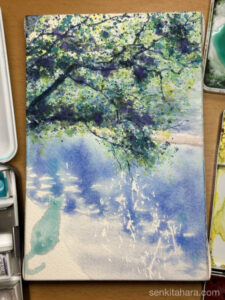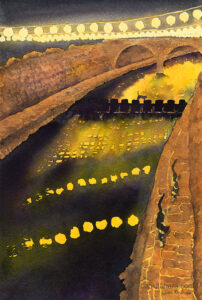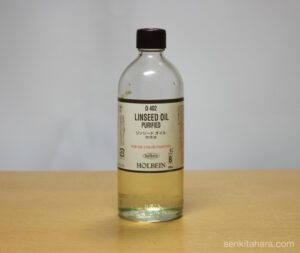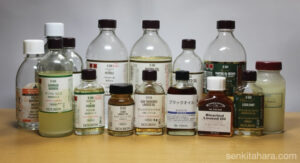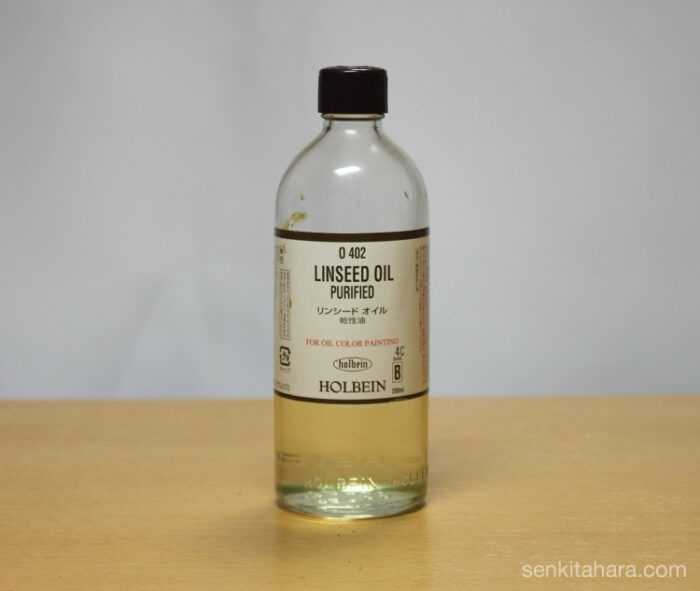
油彩にとって一番大事なオイル(画用液)がリンシードオイル。
亜麻仁油とも呼ばれて、食用にも使われるのでスーパーで見かけることもあるかも。
油彩では乾性油という種類に分類される。
乾性油は、空気中の酸素と反応して絵具を固めてくれるオイル。
なので、油絵具が乾く(固まる)のはリンシードオイルのおかげなのだ。
なお、揮発はしないので匂いは穏やか。
ちなみにリンシードオイルは、乾性油の中で一番画面を強くしてくれる。
丈夫な作品を作りたかったら、リンシードオイルを選ぶといい。
リンシードオイルの欠点として、時間が経つと黄色っぽくなってしまう点がある。
これを黄変(おうへん)という。
しかし、他のオイルや樹脂も黄変するので、あまり気にすることはないと思う。
気になる人は、スタンドオイル(重合亜麻仁油)が配合されたペインティングオイル(調合溶き油)を使うといい。
これについては、また後日紹介したいと思う。
余談だが、健康食品ブームに乗っかって筆者も食用の亜麻仁油を食べたことがある。
顔に近づけると画用液の匂いが鼻を刺激するので、初めの頃は口に入れるのに抵抗があった笑。
Linseed oil is the most important oil in oil painting.
It is also an edible oil, so you can find it in supermarkets.
It is a type of drying oil that helps the painting dry by oxidising.
It doesn't evaporate into the air, nor does it have a strong smell.
Linseed oil contributes to making the painting stronger than most other oils.
So, if you want your piece to be durable, it’s a good choice.
A downside of linseed oil is that it tends to yellow over time.
This is known as yellowing.
However, you don’t need to worry too much about it, as other oils also yellow with age.
If you want to minimise yellowing, you can use stand oil instead of raw linseed oil.
Some ready-mixed oils are made with stand oil as well.
I’ll write more about these another time.
Just as a side note, I once tried ingesting linseed oil.
Of course, I bought an edible bottle from the supermarket, but it smelled like painting oil, which made for quite a strange experience!

